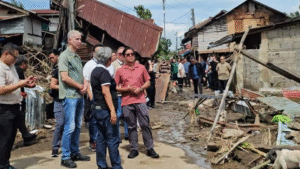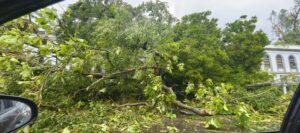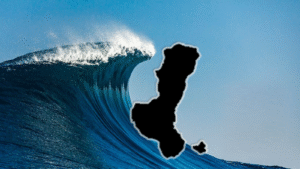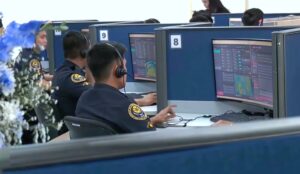The Philippine Institute of Volcanology and Seismology (PHIVOLCS) has lowered the alert status of Kanlaon Volcano from Alert Level 3 (magmatic unrest/high level of volcanic unrest) to Alert Level 2 (moderate level of volcanic unrest), effective 6:30 PM, July 29.
This decision comes after a period of decreasing volcanic activity following its last eruptive event on May 13, 2025.
According to the PHIVOLCS bulletin, several monitoring parameters indicate an overall declining trend in Kanlaon’s unrest. Volcanic earthquake activity, as recorded by the Kanlaon Volcano Network (KVN), has significantly decreased, averaging 8 events per day since May 14, compared to the previous average of 14 events per day.
While volcano-tectonic (VT) earthquakes still dominate, ash emission from the summit crater, which began in October 2024, ceased after June 5, transitioning to quiet degassing of steam-dominated plumes.
Sulfur dioxide (SO2) flux has also declined, averaging 1,857 tonnes/day since May 13, 2025, a notable drop from the over 4,400 tonnes/day recorded between June 2024 and February 2025.
This decrease in gas emission, along with a short-term deflation of the edifice observed in late June to early July 2025, suggests a pause in magma intrusion or a reduction in volcanic gas within the shallower levels of the volcano, PHIVOLCS said.
Despite these positive developments, PHIVOLCS emphasizes that Alert Level 2 does not signify the end of unrest or the disappearance of eruption threats, as magma has already intruded deep beneath the edifice.
PHIVOLCS strongly reiterates that communities within the 4-kilometer radius Permanent Danger Zone (PDZ) must remain evacuated.
The lingering chances of short-lived explosive eruptions and sudden steam-driven or phreatic explosions, which can generate life-threatening hazards like pyroclastic density currents (PDCs), ballistic projectiles, rockfalls, and lethal expulsions of volcanic gas, still exist, it added its advisory.
LGUs are urged to continue preparing communities within the PDC hazard zones for potential subsequent evacuations if unrest re-escalates.
PHIVOLCS advised civil aviation authorities to continue to advise pilots to avoid flying close to the volcano’s summit due to the risk of ash from sudden eruptions.
PHIVOLCS will maintain close monitoring of Kanlaon Volcano, and any new developments will be immediately communicated to all concerned stakeholders. Should monitoring parameters show an uptrend, the Alert Level may be raised back to Alert Level 3.








